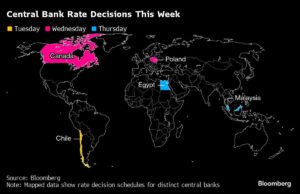The US labor market is in the spotlight again as upcoming reports, including the monthly payrolls report, will play a crucial role in determining the need for further interest-rate reductions by the Federal Reserve. Chair Jerome Powell has already hinted at a September rate cut, and with inflation slowing, the focus is on maintaining a balance in the labor market.
The August jobs report, due this Friday, is expected to show an increase in payrolls of around 165,000. While an improvement from the previous month, the average payroll growth over the past three months is expected to be the smallest since 2021. The jobless rate is also projected to dip slightly to 4.2% from 4.3%.
In addition to the jobs report, the government will release data on job vacancies, which are expected to decline to a three-month low of 8.1 million. This figure, along with the number of vacancies per unemployed worker, provides valuable insights into the balance of labor demand and supply in the economy.
Other key reports in the upcoming week include weekly jobless claims, ADP Research Institute’s snapshot of private payrolls, and the Beige Book of regional economic conditions by the Fed. Purchasing managers indexes for manufacturing and services will also be released, giving a comprehensive view of the overall economic landscape.
On the global front, the Bank of Canada is likely to deliver a third consecutive rate cut, focusing on the weakness in the job market despite inflation being within target range. Meanwhile, Asia will see a wave of manufacturing PMI data, with China expected to show a return to expansion after a recent dip.
In Europe, the focus will be on euro-zone policymakers as they approach a decision on another rate cut, given the low inflation levels. Germany’s factory orders and industrial production data will shed light on the country’s struggling manufacturers, while the UK awaits final takes on August purchasing manager indexes.
Latin America will see Brazil reporting second-quarter economic growth figures, likely indicating a rebound in demand. President Luiz Inacio Lula da Silva’s policies and the central bank’s response to inflation will be closely watched. Chile will also have key reports, including a potential rate cut and monetary policy report release.
Overall, the economic landscape is filled with important data releases, central bank decisions, and policy discussions that will shape the financial market in the coming weeks. Stay tuned for more updates and analysis on Extreme Investor Network to stay ahead of the curve in the world of finance.

